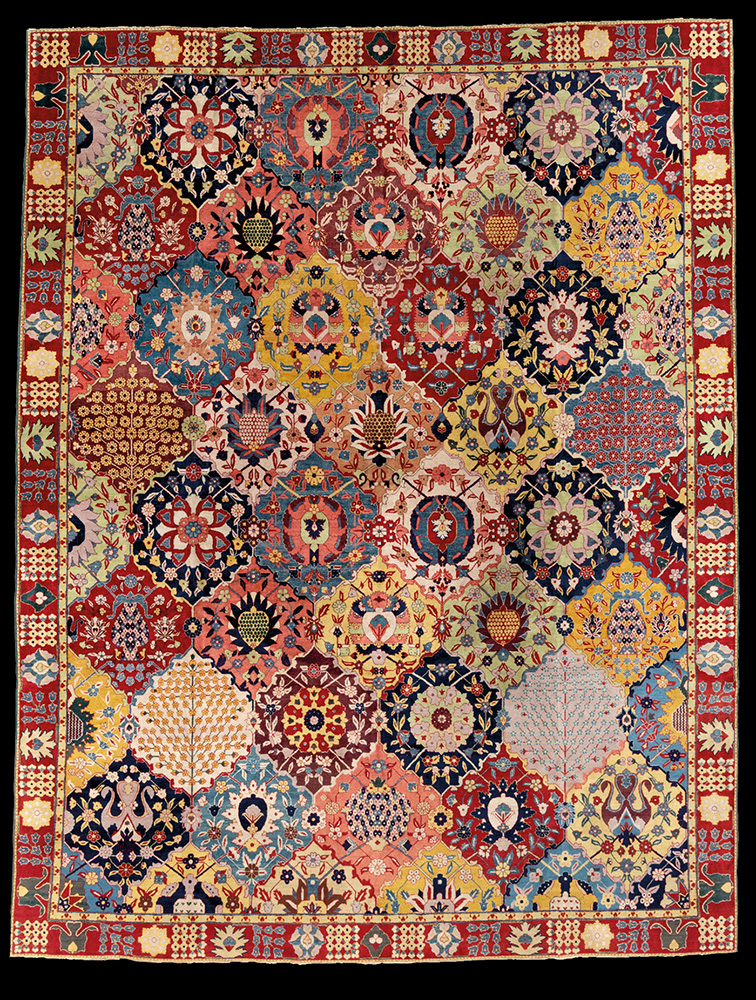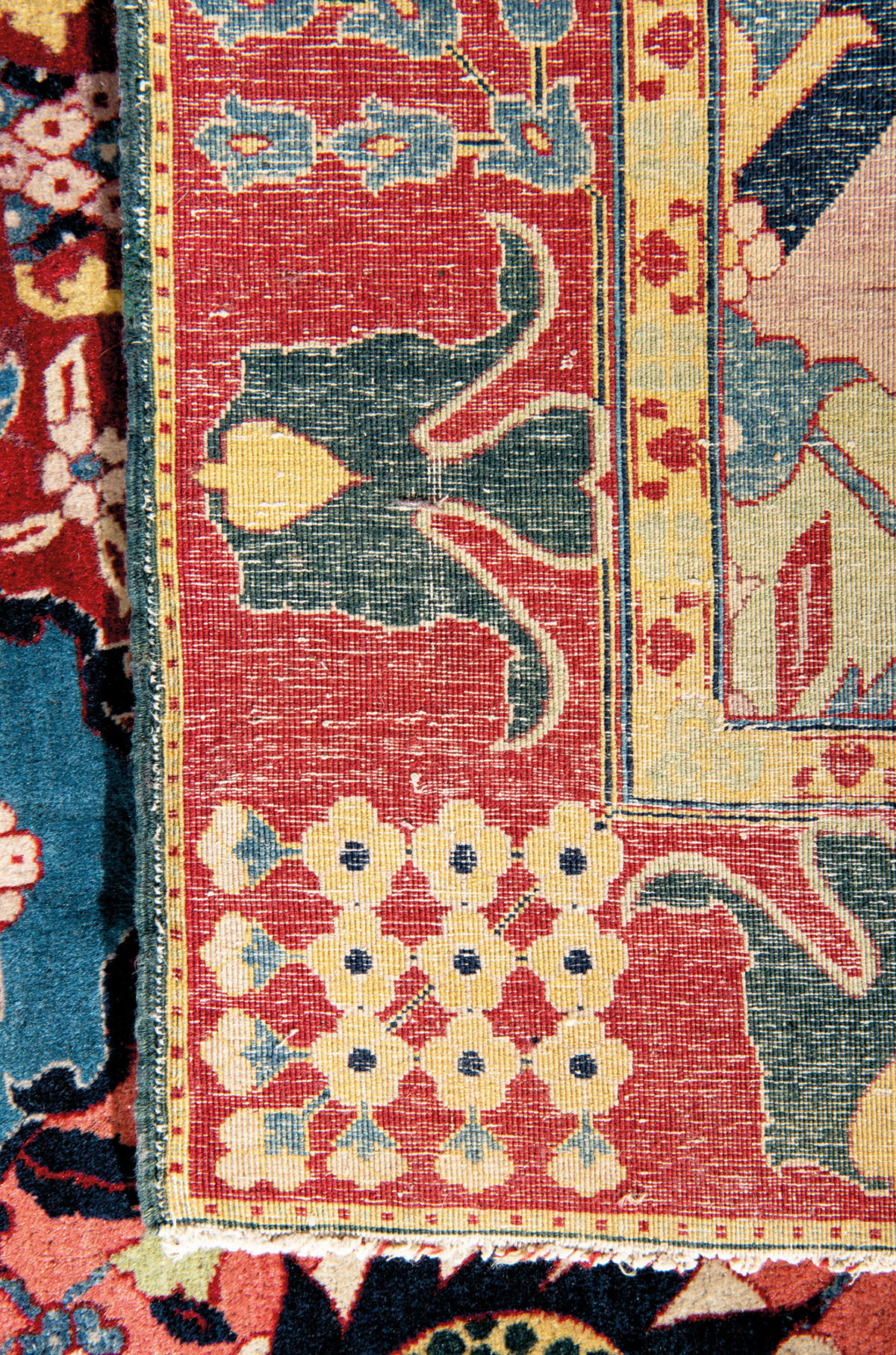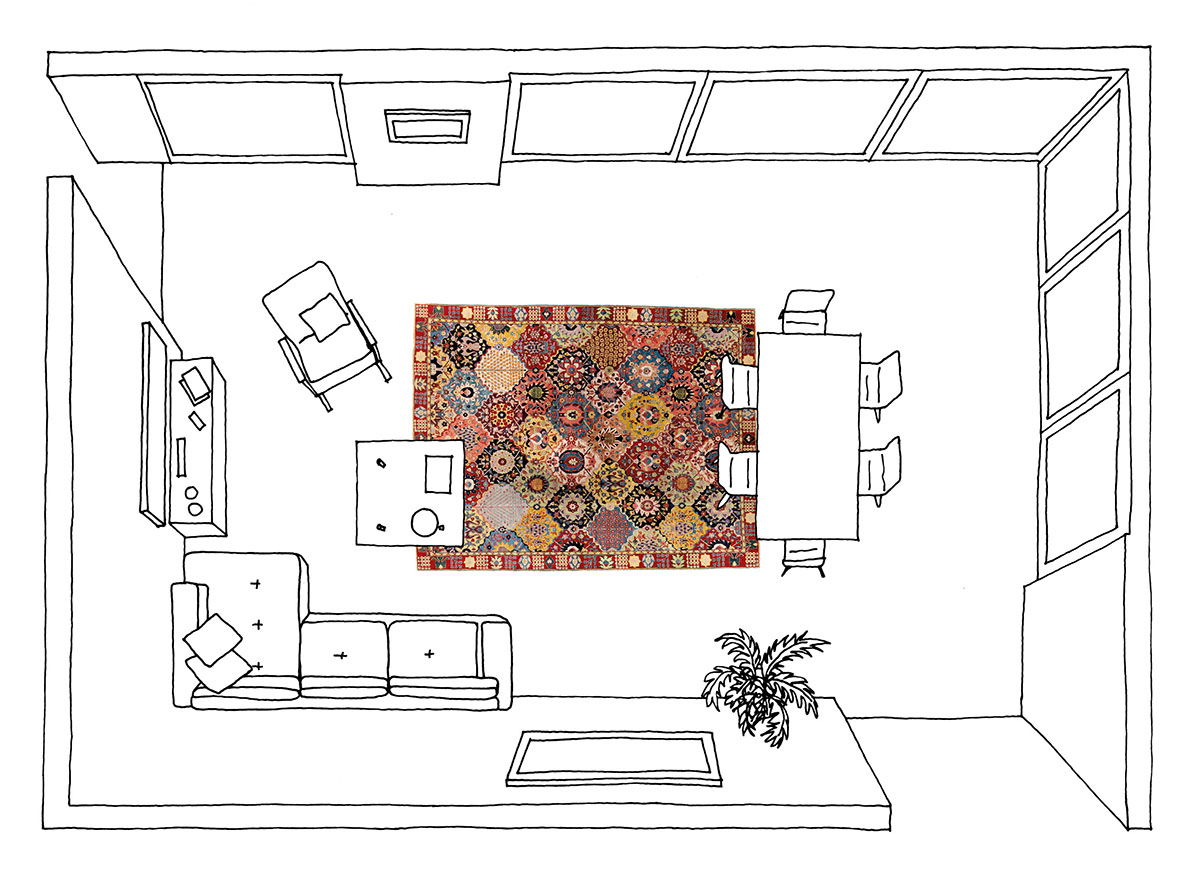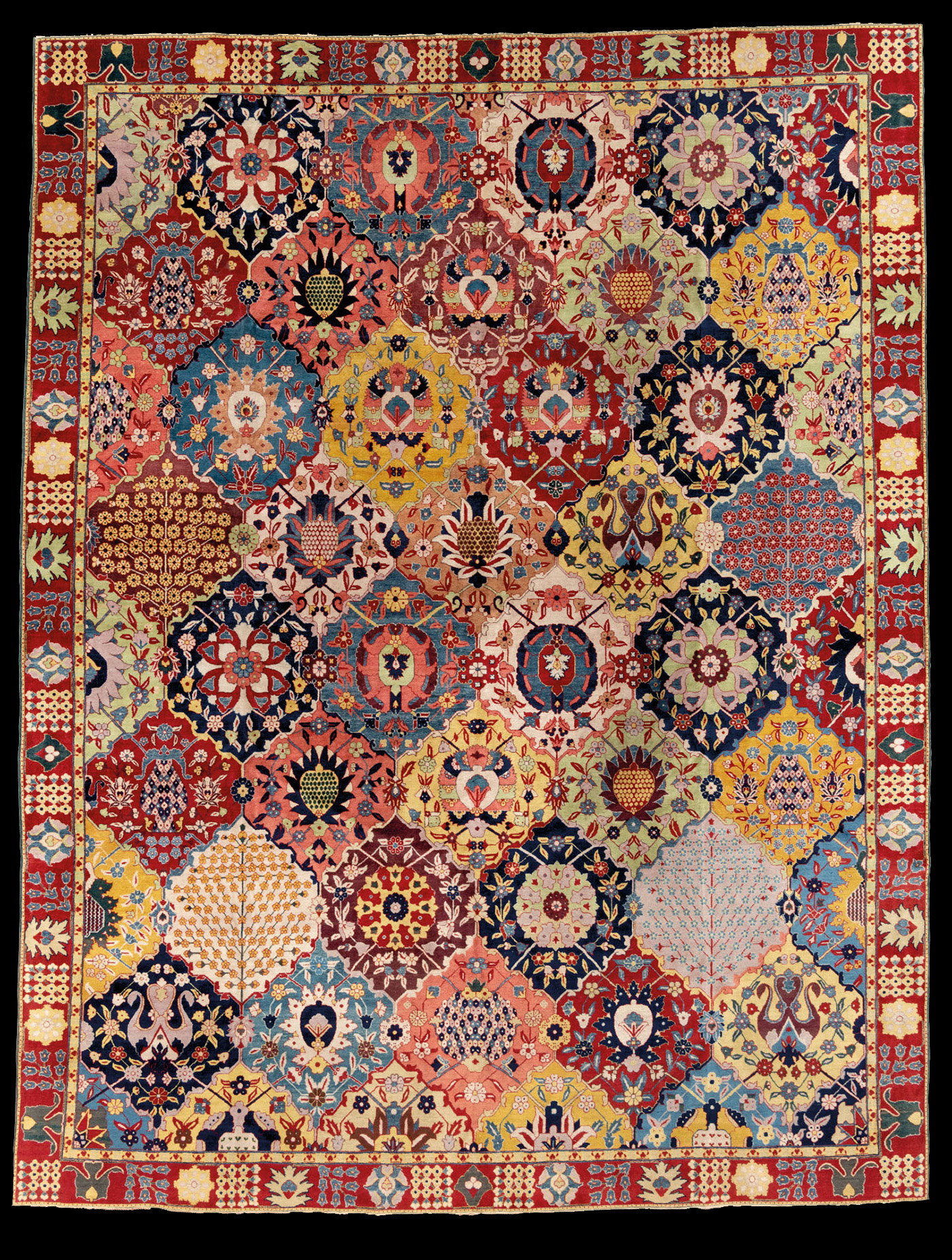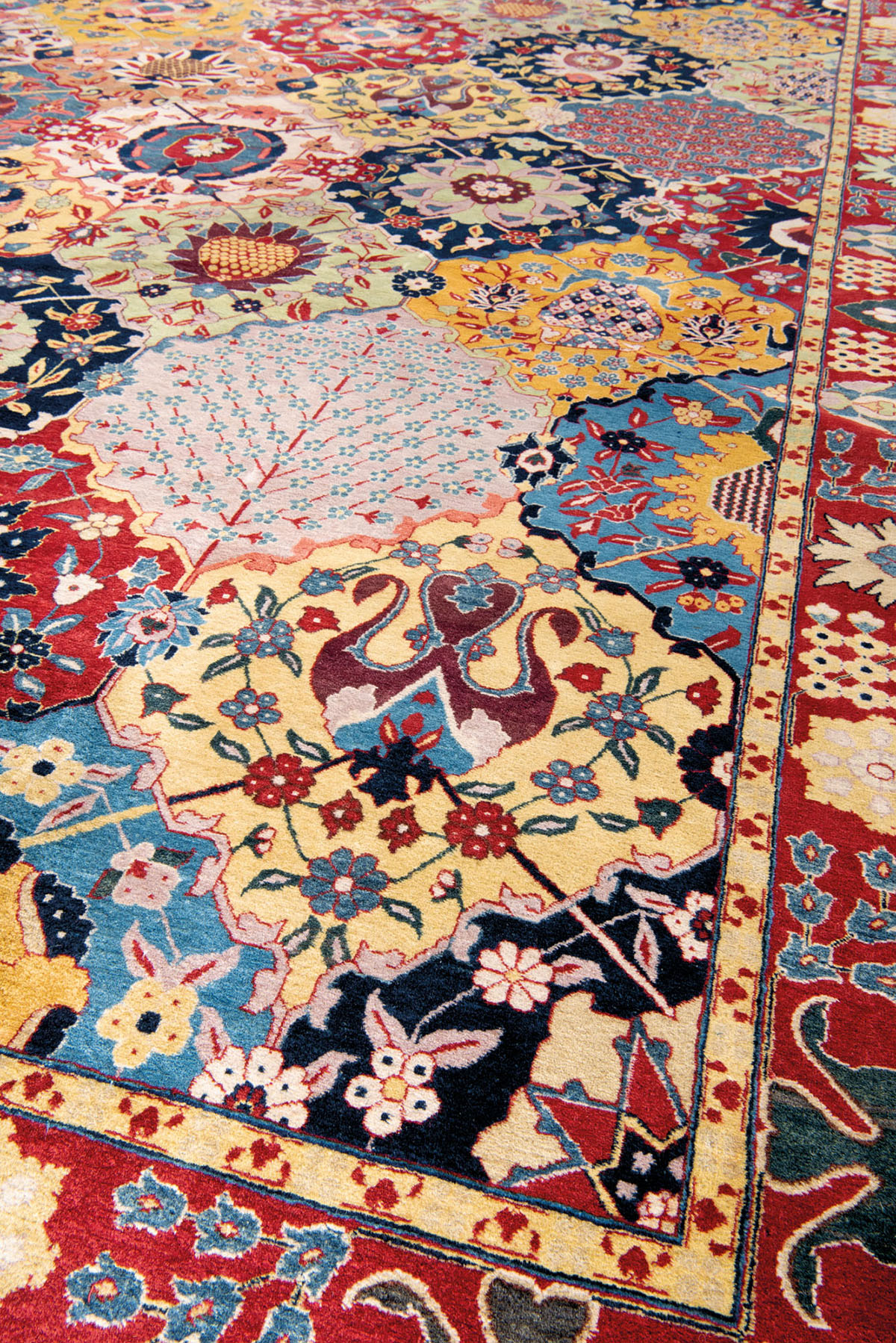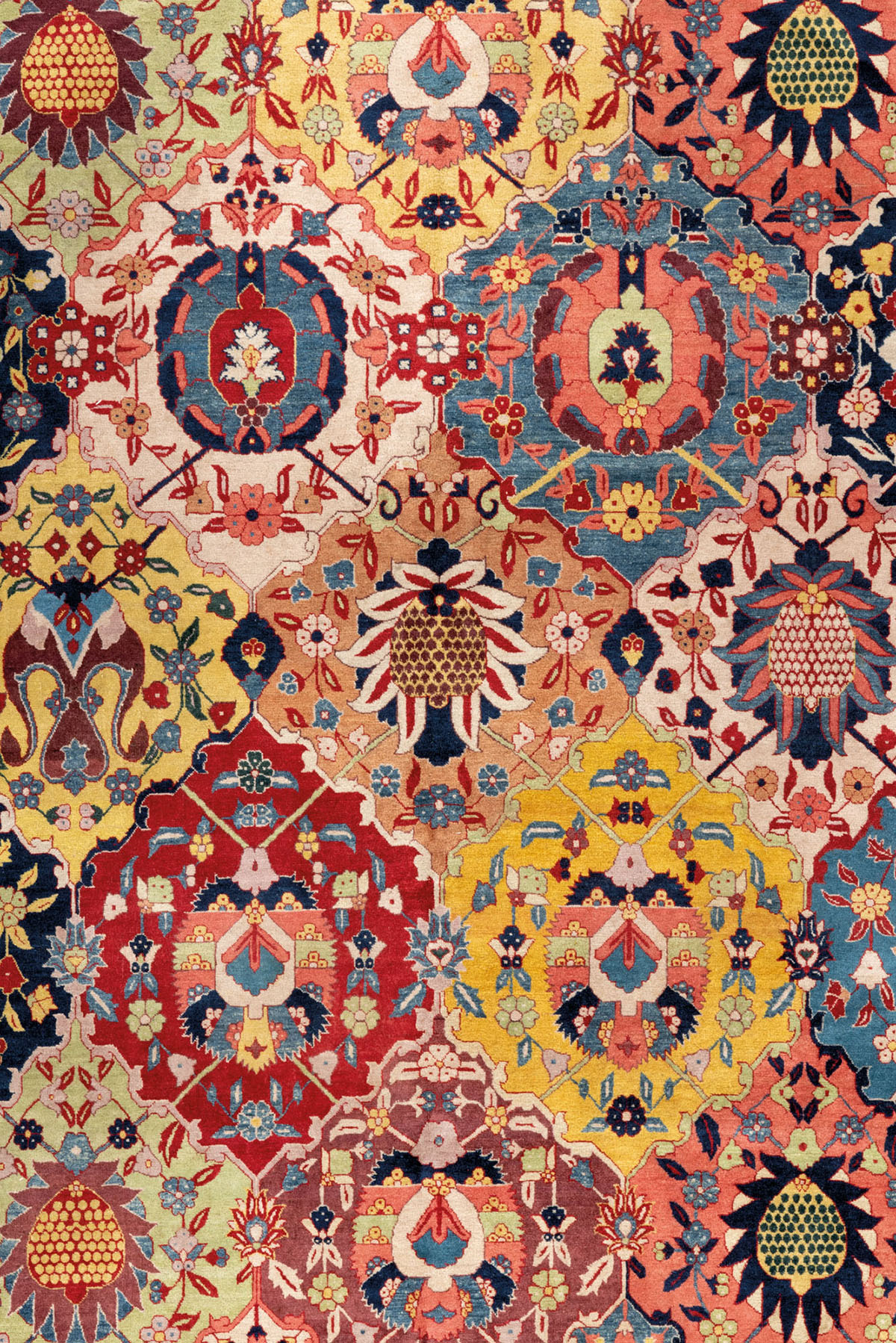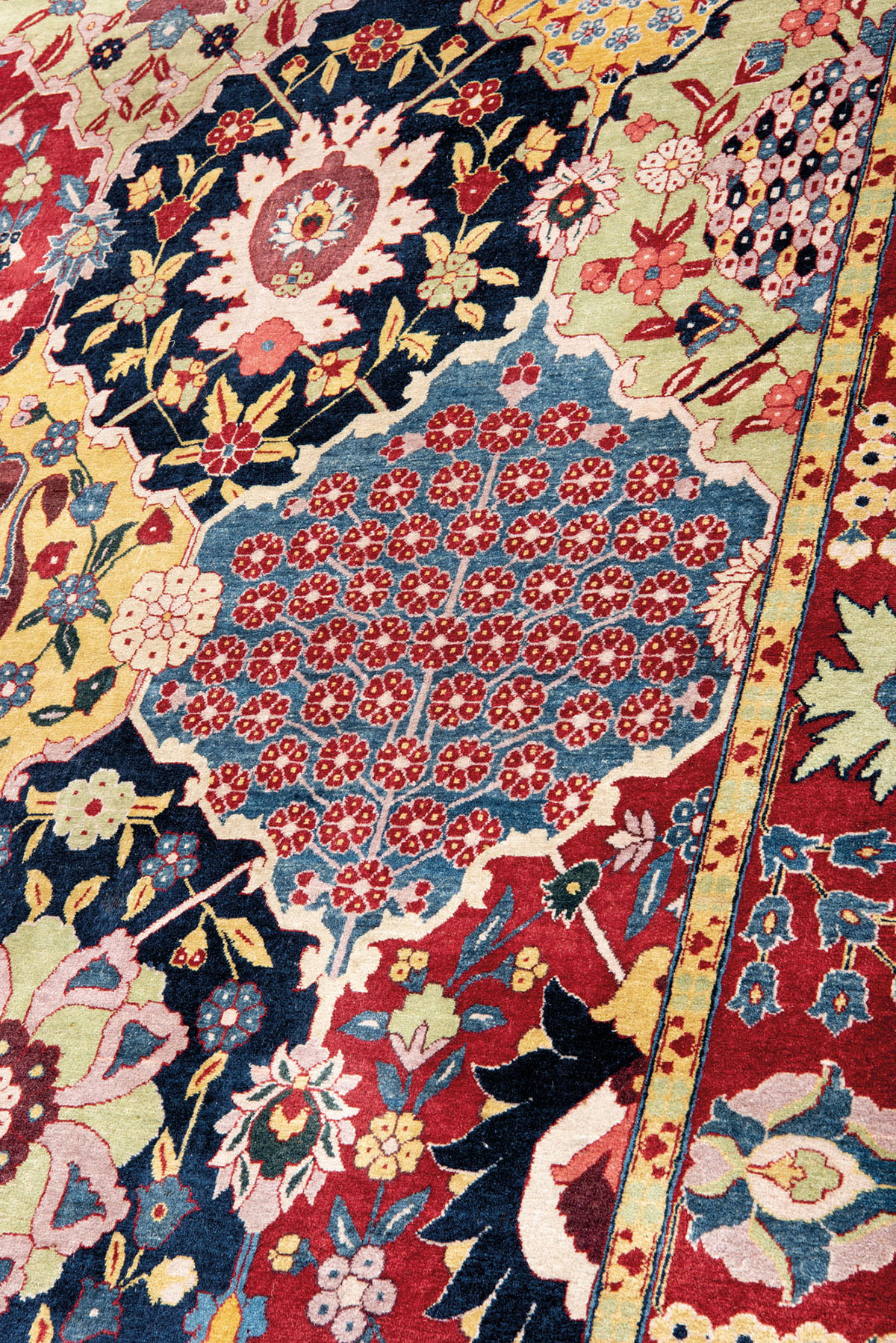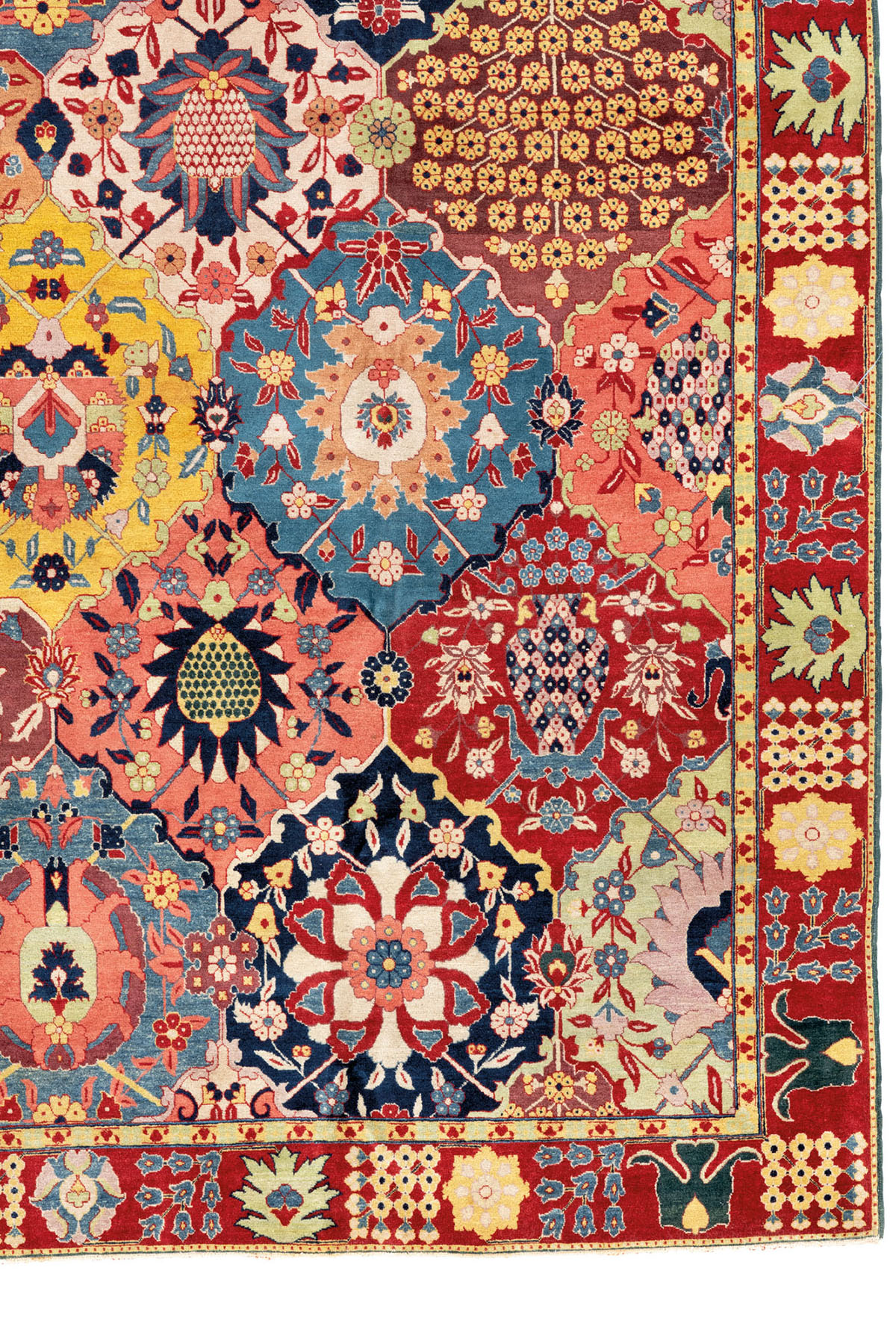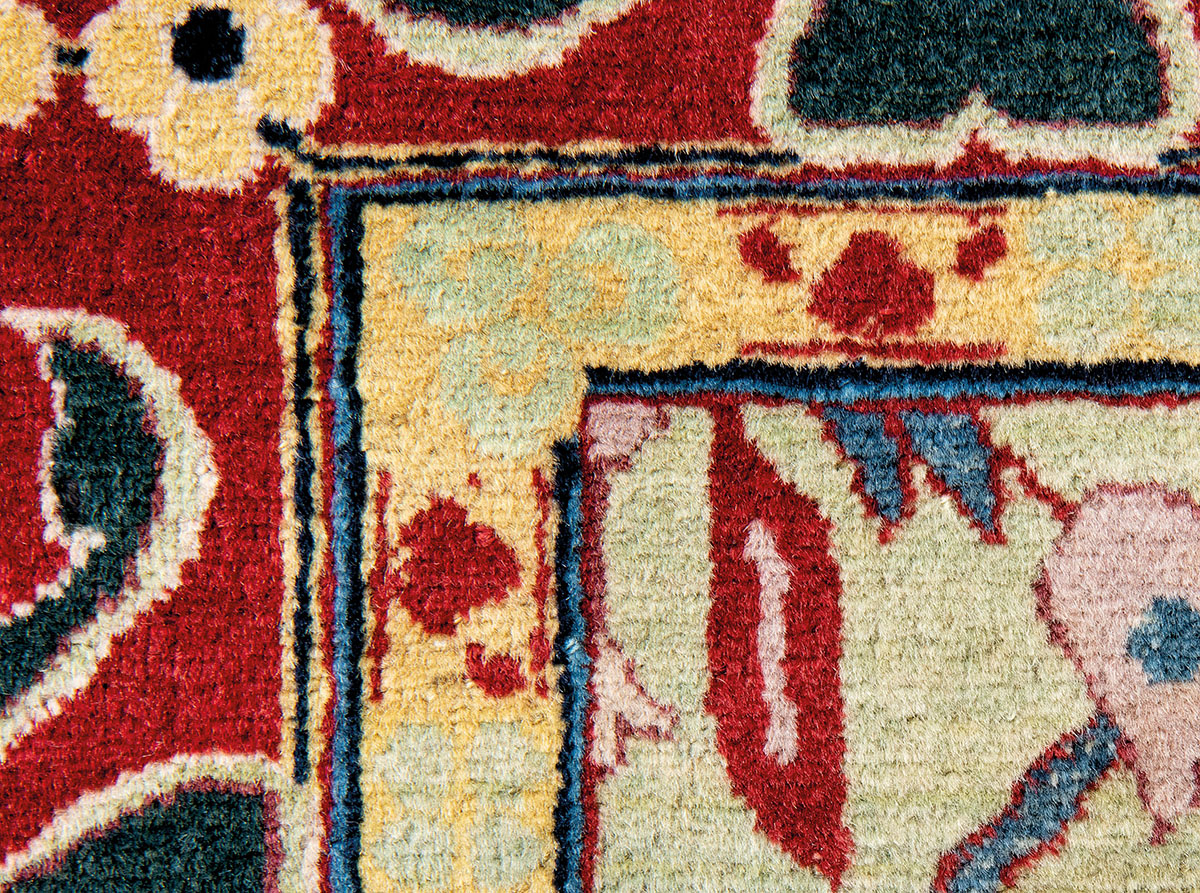Antique
Petag Tabriz carpet with the 16th century Safavid Vase design
Code:
TBPT02
Age: ~1920
Size: 294x379cm
Size (ft): 12ft.4in. x 9ft.6in.
Knots: Gördes (Turkish, symmetrical)
Description: This rug with the Safavid vase design was
woven in the workshops of PETAG.
The German firm Persische
Teppich-Gesellschaft (PETAG) was founded in Berlin in 1911 by Heinrich
Jacoby (1889-1964). At his initiative, a large workshop was opened in
Tabriz to weave carpets that maintained traditional quality against the
perceived decline resulting from the mass commercialisation of weaving as
a result of Western demand. Using lustrous wool and vegetable dyes the
company revived the art of weaving using old and elegant designs from the
16th and 17th century.
The different qualities derived
their names from the density of knots : Pertovi, Hamajun, Teimuri, Rustem
and Cyrus. The workshop shut down in the forties.
Heinrich Jacoby
remains an authority in the world of the Oriental carpet. In 1923 he
published “Eine Sammlung orientalischer Teppiche”and in 1949 “ABC des
echter Teppichs”. He also contributed to Arthur U. Pope’s massive work “A
Survey of Persian Art” by supplying the section “Materials used in the
making of carpets”.
From the notes of an American missionary working in
Tabriz area in 1913: "This year brought a good thing to the poor people in
Tabriz. A German firm opened up a carpet workshop, creating employment for
a lot of people from town and the neighbouring villages. We are getting
used to the sound of the steam whistle, calling the workforce in the
morning and liberating them at noon and at night. And better still, we
hear this sound six days a week, remaining silent the seventh, this way
allowing employer and employees to observe the Christian day of rest."
The Petag-rugs can easily be
recognized by the chintamani-sign that is knotted in each piece.
Condition: The colour palette is wide and well saturated. The
cintamani signature is woven in a pale light blue in the inner guard
stripe to one corner. The selvages are original. Both ends have retained
some of the original killim with its bi coloured securing line but where
it is lacking it has been stabilised. Overall this carpet is in excellent
condition.
Provenance: formerly in the Estate
of Heinrich Jacoby
CF:
https://www.sothebys.com/en/auctions/ecatalogue/2009/carpets-n08597/lot.94.html
https://www.sothebys.com/en/auctions/ecatalogue/2006/carpets-n08258/lot.280.html
|

